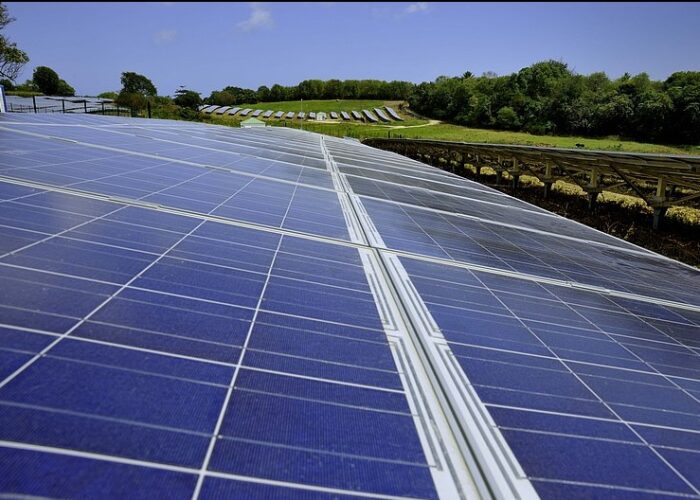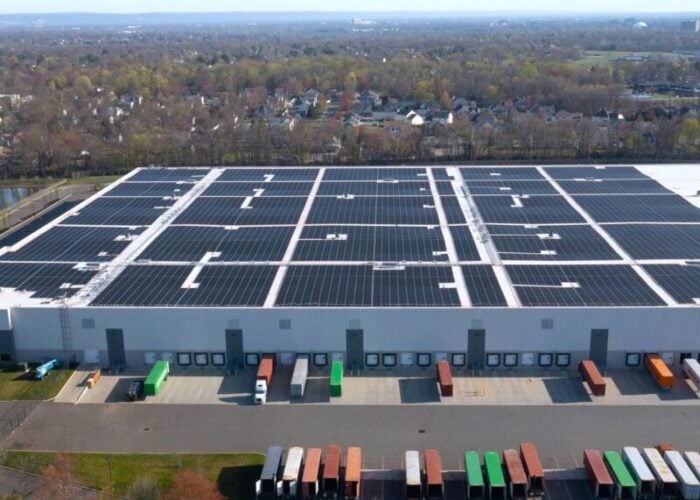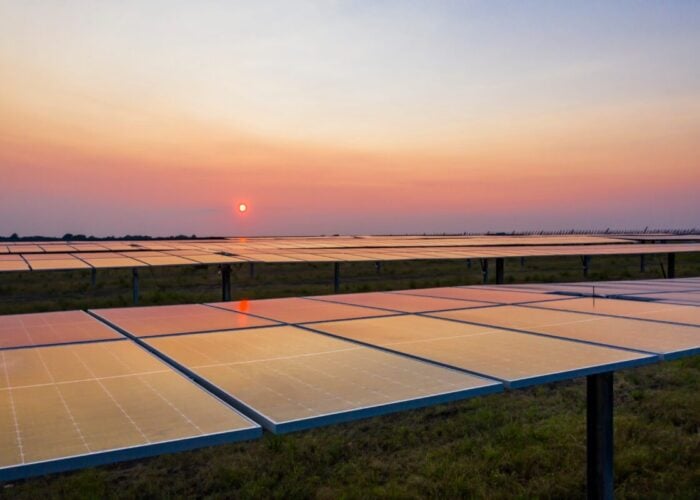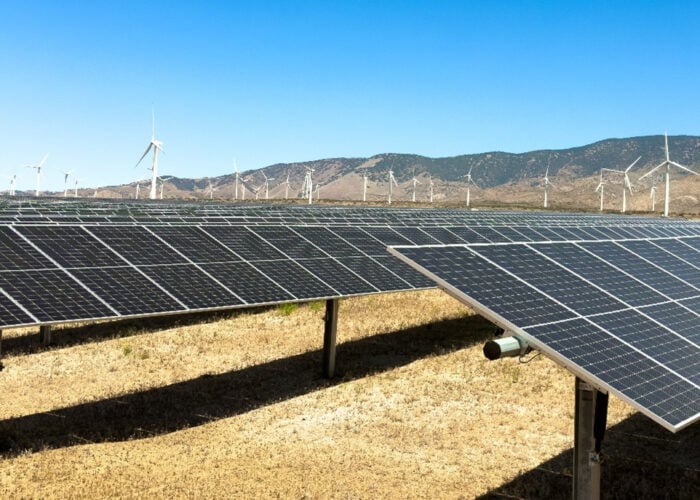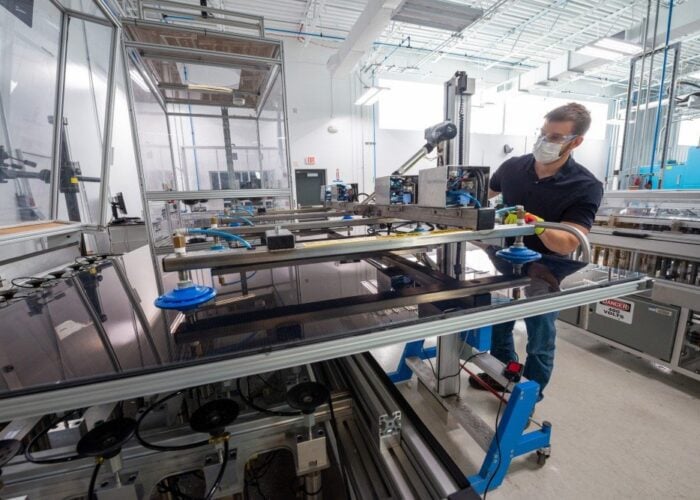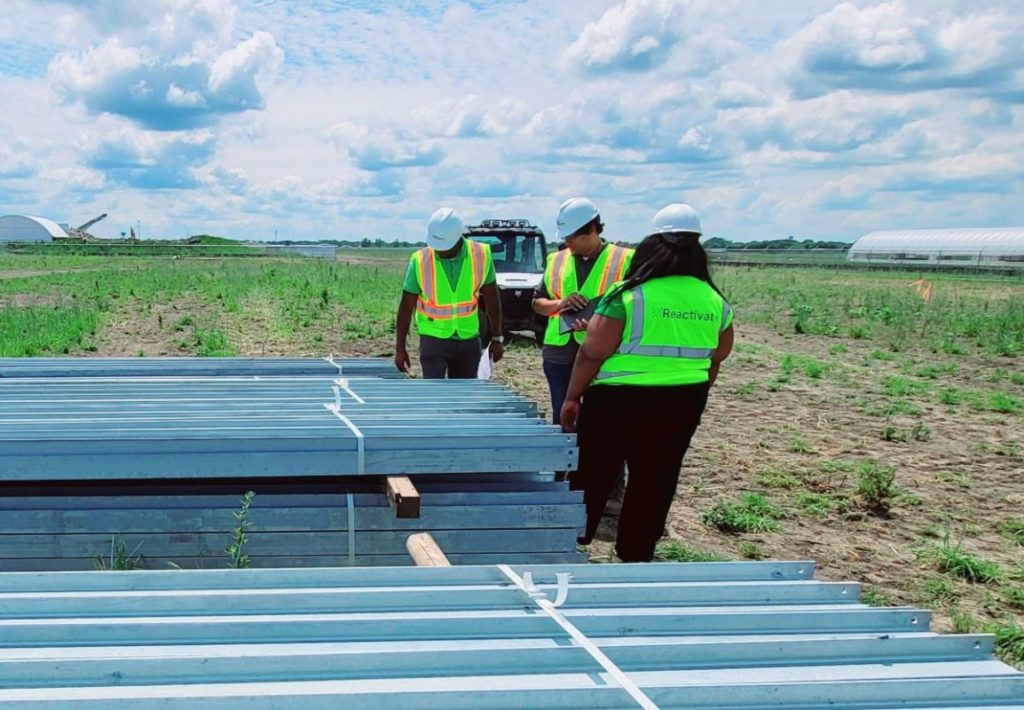
One year after the Inflation Reduction Act was passed, growth of community solar is expected to accelerate in the coming years thanks to federal help but also at state-level with states passing or improving new legislation. PV Tech Power Reporter Jonathan Touriño Jacobo looks at three different examples: California, Ohio and Minnesota, and investigates the challenges community solar still faces.
Even though utility-scale solar PV in the US added more than half of all capacity in 2022, followed by residential solar as the top market segments, community solar is slowly working towards accelerated growth in the coming years. By the end of the first quarter of 2023, installed community solar capacity reached 5.8GW, according to data from trade body Solar Energy Industries Association (SEIA).
Unlock unlimited access for 12 whole months of distinctive global analysis
Photovoltaics International is now included.
- Regular insight and analysis of the industry’s biggest developments
- In-depth interviews with the industry’s leading figures
- Unlimited digital access to the PV Tech Power journal catalogue
- Unlimited digital access to the Photovoltaics International journal catalogue
- Access to more than 1,000 technical papers
- Discounts on Solar Media’s portfolio of events, in-person and virtual
That number is expected to double in the next five years, according to a report published by the Coalition for Community Solar Access (CCSA) and Wood Mackenzie earlier this year, with at least 6GW of community solar to be added between 2023 and 2027.
The impetus for this future growth of community solar will, without doubt, come from the Inflation Reduction Act (IRA) and new guidance on community solar that was published this year. But the boost will not only be coming at a federal level; many states are working towards implementing or improving bills or programmes directed at community solar.
At the time of writing, 21 states had a legislation or policy either approved or in the works, with more to come in the coming months and years. And the number of states with a least one community solar project that is operational, stands at 41, including Washington DC, according to SEIA.
“We’re seeing kind of a new state pop up with community solar legislation and/or an actual programme about once every nine months or so. It’s a very systematic growth of the industry propelled by both legislation at the state level, and at the federal level,” says Jeff Cheng, CEO at community solar developer Nautilus Solar which is present in more than ten states. This rollout of new programmes or legislation from a new state in a timely manner allows developers enough time to plan ahead for a gradual rollout, adds Cheng.
Here’s a look at three different states – California, Ohio and Minnesota – that have set out to help boost the growth of community solar. This also encompasses how diverse legislation can be from state to state and how the IRA is likely to help accelerate the growth of community solar across the US.
IRA boost for community solar
Among the many provisions included in the IRA, there have been several that will be a major boost for community solar to thrive in the coming years in the US. Starting with the extension of the solar Investment Tax Credit (ITC) for a decade, with a 30% rate deduction for commercial and residential solar systems. Within the ITC there is also a provision with bonus credits towards low-to-moderate income (LMI) consumers in mind.
“In my mind, what the IRA has done, is it’s given some medium- to longer-term stability for the industry. It’s a ten-year programme. It allows us to plan for that systematic growth over a much longer period of time, without fear that in a year, the policy will change completely and we will have to revamp the business again,” says Cheng.
Earlier this year the US Department of the Treasury released guidance on a programme directed towards low-income consumers, the Low-Income Communities Bonus Credit. As the goal is to increase the renewables intake from low-income communities, projects that apply to this programme – which allocated 700MW of solar and wind capacity to low-income communities – will benefit from a 20 percentage point boost on ITCs.
At a state-level, some programmes require a certain percentage of a community solar projects to have LMI customers, with Delaware at 10%, Virginia at 30% or California at 51% for low-income, which will be explored in this article.
“In many cases, because of the Inflation Reduction Act, we’re going to pursue to get some of those ITC adders for our projects that allow us to actually provide more bill credits and more savings to low-income customers,” says Jason Spreyer, executive vice-president of business development at solar developer Summit Ridge Energy.
“Because they carved out in the IRA the moderate element, it has to be low-income. So we’re actively pursuing and aggregating low-income customers across many markets, the most that we’re doing right now is in the state of Virginia and Illinois.”
California’s 51% low-income target
California has long been the leading state for solar PV across the US, with more than 40GW of capacity installed as of the end of Q1 2023, according to data from SEIA. This represents more installed solar capacity than the next three states in the list combined, Texas, Florida and North Carolina.
It should therefore not come as a surprise that the leading state in solar PV worked towards implementing a legislation around community solar that could be used as a blueprint for other states. Assembly Bill 2316, which was passed by the governor of California Gavin Newsom, in September 2022, is now going through the California Public Utilities Commission, which is working towards evaluating several proposals for community solar programmes.
A Net Value Billing Tariff proposed by the CCSA is supported by a broad coalition of environmental justice groups, ratepayer advocates, labour and the building industry association.
“This bill moves faster than any other I’ve ever seen in my policy career. One of the reasons is just that the appetite for community solar is there,” says Theodora Okia Quarles, former policy and strategy manager at community solar developer Lightstar Renewables, which has a pipeline of projects of nearly 1GW and is present in 12 states.
Perhaps the most important aspect of the bill is the requirement that any community solar programme enforced in California would “ensure at least 51% of its capacity serves low-income customers”, putting community solar once again at the forefront of allowing everyone the possibility to transition from fossil fuels to renewables.
“The bill was definitely ambitious in having that language. But, that’s the goal, for low-income customers to benefit. Because I’ve seen in the past that when legislation doesn’t have that prescriptive number you can’t necessarily hold anyone to account after the fact,” says Quarles.
“Community solar has this ability to bring renewables to people near where a project is being built and give the benefits of its power generation to its consumers,” says Cheng. “It’s probably one of the best reflections of really what community solar is trying to do. To give the benefits of renewable power to an audience that, arguably, wouldn’t normally be able to have that.”
For new or improved legislation to actually allocate a certain amount towards low-to-moderate income (LMI) consumers in community solar projects will ensure that no one is left behind, and California’s push goes a step further as it would require more than half of low-income customers to be signed in.
“California has led the nation in rooftop solar capacity for a number of years now. And it’s been on top from a community solar standpoint, it’s a large state, with vast territories. And from that standpoint, there’s a lot of opportunity for community solar,” adds Quarles.
Ohio embraces community solar
Ohio’s case is quite peculiar given the presence of cadmium telluride thin film manufacturer First Solar in the state with a module facility. The Midwest state will also be home to Chinese solar module manufacturer LONGi and US developer Invenergy’s 5GW module assembly plant and yet, before bill House Bill 197 was introduced, community solar was non-existent in Ohio.
This brings the number of US states with a programme for community solar, either approved or pending, to 21. “Community solar truly only exists, in our definition, in 21 states in the United States,” says Carlo Cavallaro, Midwest regional director at the CCSA, adding that the bill serves more as a foundational stone for community solar in the state.
The new programme for community solar aims to bring 1GW of community solar that can be placed anywhere within the major electric distribution utility territories, 500MW of capacity targeted for distressed sites – such as brownfield or wastelands – and 250MW of capacity specifically allocated for Appalachian communities in Ohio that have been affected by the transition towards renewables, such as former coal-fuelled power generation sites.
Going from a non-existent market for community solar to more than 1GW will also have a big impact economically in Ohio, with US$5.6 billion, along with US$490 million in local tax revenues, based on a report that the CCSA wrote in partnership with Ohio University’s School of Business, says Cavallaro.
After what happened in other states, Cavallaro expects that if the legislation passes, it would take less than the four-year mark the programme was set for the state to see what benefits community solar will bring in Ohio and look at ways to improve it or expand further from the initial 1.75GW capacity.
Moreover, this makes Ohio the first state in its region to move forward into implementing a programme directly targeted to community solar, with the closest state being Illinois, says Cavallaro. A state that is working on the second iteration of its community solar programme. This allows for major growth in the Midwest, where there is space to accelerate the growth of community solar in the US.
“Community solar is continuing to grow because of the fungible nature of the programmes. Across the states, Michigan is looking at it very seriously. Wisconsin and Pennsylvania are very active. There’s a lot of activity in the Midwest for growth,” says Cavallaro. The next step now for Ohio is to pass the bill and welcome the first community solar project in the state.
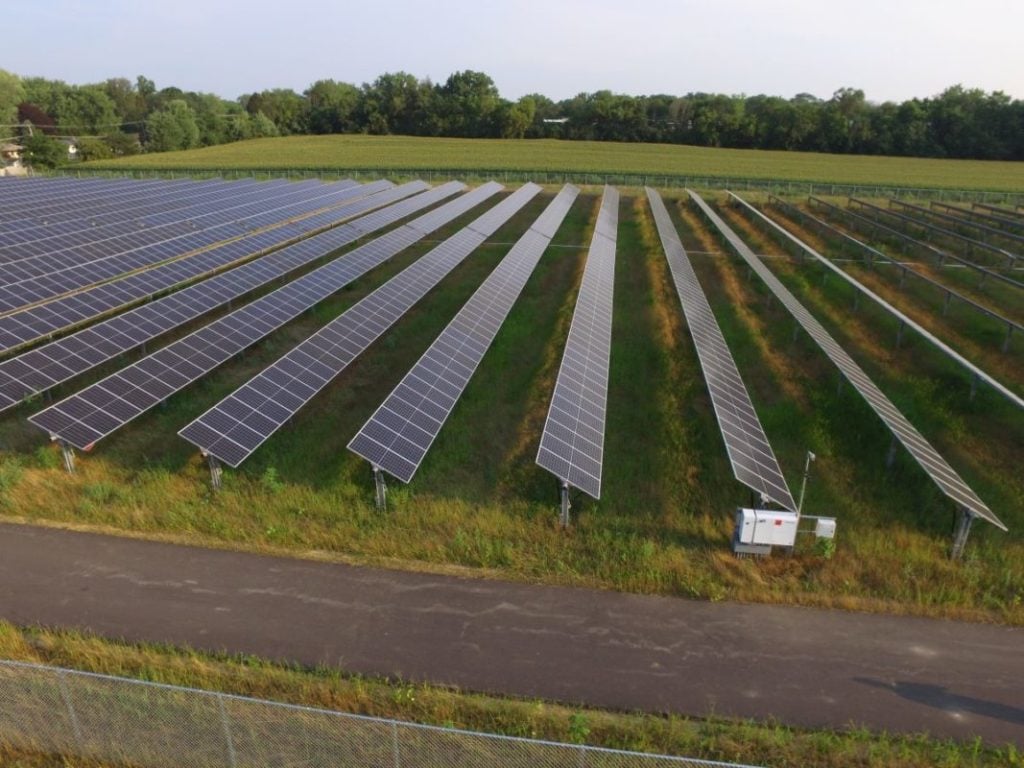
Minnesota’s overdue programme revamp
Minnesota, which is one of the leading states in the country in installed community solar capacity, the community solar garden, as they are known in that state and in Colorado, programme has recently seen an “evolution” as Kevin Cray, Mountain West senior director at the CCSA, would put it.
“I’m kind of seeing this as community solar 2.0. If you look back at the actual statutory language, the entire legacy programme is, in a way, retained in the statute,” says Cray, adding that new statutory sections have been established to the programme moving forward from next year. During the run of the initial programme, community solar added 800MW of capacity.
Some of these changes are the increase of the maximum size of a project going from 1MW to 5MW, which is more aligned with the average size of a community solar project; the removal of a restriction that impeded customers from a contiguous county to be subscribed to a solar project that was in a different county they are living in; and 55% of a project capacity to be allocated to public interest subscribers, such as schools, tribal entities, affordable housing buildings and low-income residential. In addition, 30% of the project capacity needs to be allocated to LMI customers.
“That’s kind of embracing the equity focus that we’ve seen in other solar community markets, such as New Jersey, Maryland, California or New Mexico,” says Cray. “A lot of the kind of newer leading markets. I’m viewing this as Minnesota catching up with where the rest of the country has gone since the enabling legislation passed in Minnesota in 2015.”
Having it in writing, that a certain percentage of customers must be from moderate or low-income households, will guarantee that these customers are not left behind, as was the case in Minnesota’s previous programme which only required to have at least five subscribers, and this caused many of the projects being targeted towards commercial customers instead of residential ones.
“You would see projects that were only made up of five to 20 subscribers, largely commercial. And you didn’t really see those benefits trickling down to residential customers, in particular, to low-income or low- to moderate-income customers. Now there’s a very specific requirement, that those people make up at least 30% of the project,” says Cray, adding that the number would likely be even higher due to how the rate construct works. LMI residential customers get the highest credit rate which would encourage developers to target a bigger percentage than the 30% minimum required.
This new legislation is expected to give a boost to community solar in Minnesota, which had seen a deceleration of projects in the past few years, with around 40-50MW of capacity added, says Cray, who expects the number to reach 100MW in the coming years. This is also the cap the state has put for 2024 to 2026, and will then be reduced to 80MW per year between 2027-2029. However, like all the developers consulted for this article have mentioned, interconnection could alter the pace of the growth in Minnesota.
“There are still some concerns with the interconnection process, and how long it takes to get through the interconnection process. The fact that they’re doing some serious studies, we’re going to continue to work on that. And there was some language in the bill that talks about improving the integrated distribution planning, to focus on areas of the grid that need to be upgraded proactively to accommodate more distributed generation, in particular community solar.”
Increasing the size cap of a project from 1MW to 5MW could in itself reduce the cumbersome process of getting grid access as, rather than waiting for five different 1MW projects to go through the entire permitting process and grid connectivity, developers will only need to submit a single 5MW project.
Solving interconnection issues
When asked about the main challenges community solar currently faces, the first response is almost always the same: interconnection.
“The community solar market, like much of the industry, also faces challenges with interconnections and permitting. We need more transparency at the distributed generation level to understand hosting capacity for potential projects,” says Utopia Hill, CEO at solar developer Reactivate, which has several projects in construction in Illinois and New York, and is aiming to have a solar portfolio of 3GW by 2030.
What drives solar developer Summit Ridge Energy to select or enter a new market to develop community solar, Spreyer notes that interconnection is one of the aspects the company looks at. “Some of the characteristics that we look for are good strong state policies around the incentives. Clear interconnection paths. Even if interconnection becomes a challenge, you want to have clear understanding of that path. Strong marketplaces. And more importantly the ability to build at scale.”
This does not mean interconnection is not one of the biggest challenges the company faces in general across the markets where it is present, the costs associated with interconnection or the timeframe to study projects are among the biggest challenges too. And, as more capacity is added across the states or more players enter a market, grid connectivity will get worse. “Markets that ultimately have higher levels of penetration, could result in some investment necessary in the grid,” says Spreyer.
Both transmission and distribution networks will have to increase the investment in the grid, especially if more distributed projects are connected closer to the load.
If interconnection might be the more pressing issue that needs to be solved, as soon as possible, other challenges, such as the continued difficulty to find skilled workers is also present in community solar, according to Cheng. “Whether it’s our EPCs who build the projects for us, or even on the utility side, they’re suffering from a lack of qualified personnel, quite frankly. So labour is at a premium still in this industry, which of course, drives up costs.”
Meanwhile, challenges at state level are more easily overcome with effective communication, adds Spreyer. Especially in counties that might assimilate utility-scale solar projects and community solar as the same side of a coin even though the latter offers a direct impact to the communities near a solar PV plant, with direct savings on their bills.
Bright future for community solar
Despite some of the challenges community solar is facing, the future is looking quite bright for this segment of the solar industry, with an accelerated growth that could double its numbers in less than five years, thanks not only to the tax incentives in the IRA but also through dedicated programmes at a state level.
“We will see tremendous growth in community solar in the US in the coming years. There are many people that want a choice for solar supply but live in multi-family housing, their roof may not be adequate, or there may be other constraints that limit their ability to have rooftop solar. For those individuals, community solar is an option that provides economic savings and environmental benefits,” says Hill.
Different rules for community solar implementation could seem intricate for developers to adapt to each state’s requirements but the fact that more more states are slowly implementing legislation could help boost interest in developing community solar projects, which is in itself an achievement. Ohio is an example of this, where, prior to the introduction of a community solar bill, there was no community activity in the state.
“It’s a market momentum. You see new states that are starting to adopt legislation. There’s pending legislation in Michigan, Wisconsin, Illinois and Ohio. There are new states that are coming on board but they’re not quite there yet, such as Pennsylvania. But we see them on the horizon,” says Cheng.
Community solar might not have the numbers of utility-scale solar but it does offer a possibility to US households to be able to switch their electricity consumption to renewables, especially those who cannot install rooftop solar as they do not have that option or those who cannot afford the cost of the installation.

